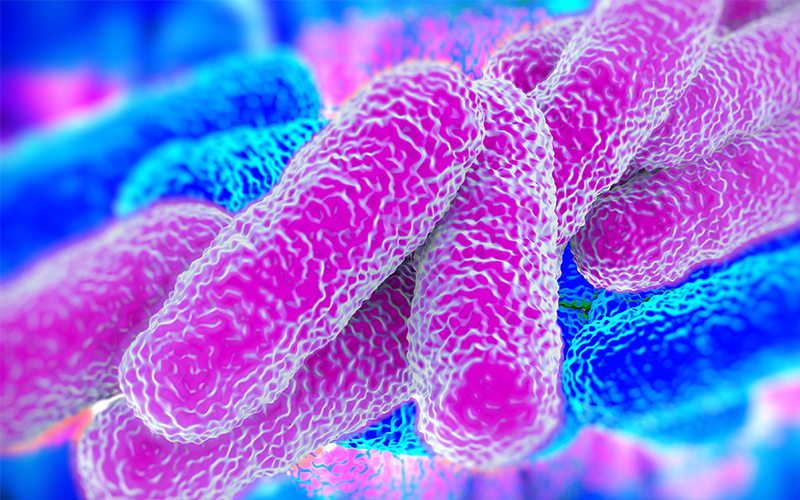
There are growing concerns within the healthcare industry about hospital-acquired infections. Among these infections, Legionnaires’ disease is often specifically concentrated to building water systems. Since the illness first struck the US more than 40 years ago, it’s begun making its comeback. Institutional and commercial facilities have noticed a rise in the reports of outbreaks and illnesses, and according to the Centers for Disease Control and Prevention (CDC), the number of people diagnosed with Legionnaires’ disease grew nearly 500% between 2000 and 2017.
What is Legionnaires’ Disease?
Legionnaires’ disease is a form of pneumonia (lung infection) caused by Legionella bacteria. The bacteria can also cause a less serious form of influenza know as Pontiac Fever. These bacteria thrive in warm water temperatures between 77°F and 113°F—making cooling towers a prime source of Legionella. Hospital-acquired legionella is also a possibility, from which the primary source of the infection is the drinking water distribution system.
The bacterium Legionella only poses a health risk when certain conditions are present:
- Legionella bacteria that are the specific type that causes illness in humans needs to be present in the building’s water supply. The bacterium is common in the environment, but may not be the same type that poses a health risk to humans.
- There must be biofilm present on the interior surfaces of equipment or water distribution piping, so the bacteria multiply and mature. In the biofilm, they’re protected by normal levels of disinfectants. Pressure fluctuations and other disturbances can discard pieces of biofilm releasing the bacteria into the water stream.
- Warm environments—at around 100°F—Legionella grows at a slower pace below this temperature, and dies more quickly above it.
- Smokers and the elderly are particularly susceptible, or a person with a weakened immune system, or respiratory illness; they must inhale mature, Legionella-infected water droplets into the lungs to contract the disease.
Ultraviolet Disinfection
There are several methods available for disinfecting water distribution systems. These include: thermal (super heat and flush), hyperchlorination, and copper-silver ionization, among others. However, the prevention method we’ll be covering in this blog is ultraviolet light sterilization.
Ultraviolet light, often referred to as UV, is a band of the electromagnetic spectrum with a wavelength ranging from 10 nanometers (nm) to 400nm. UV light is an effective tool for disinfecting water that has been contaminated with Legionella bacteria as well as other potentially dangerous microorganisms, like E. coli bacteria and Giardia lamblia protozoa.
History of UV Disinfection
Scientists in the late 1800s and early 1900s stumbled upon the revelation that sunlight had the dramatic ability to fight off and provide an effective means of treating bacterial infections. Upon further research, the first full-scale UV disinfection system was created in France in 1910. While earlier systems weren’t always reliable, by the 1950s, UV water purification had been adopted by several countries across Europe. With continued improvements and developments, including those that lowered operating costs, thousands of UV water treatment plants were operating by the start of the 21st century.
How does UV Water Disinfection Work?
A UV sterilization system operates by exposing a building’s water supply to certain wavelengths of ultraviolet light—typically 254nm. This wavelength of light damages the nucleic acids and DNA in the bacteria’s cells causing them to no longer function properly. It should be stated that UV light does not necessarily kill microorganisms. Rather, it’s a very effective way of inactivating them and preventing them from replicating and producing colonies. Keep in mind that replicating and creating colonies are the only things microorganisms do, which is also why we get sick if we consume them in large amounts, through drinking water, for example.
Since bacteria and other microorganisms are simple creatures, their DNA is primarily coded for replication. The 254 nm wavelength from the light of a UV disinfecting system is quickly-absorbed by a certain spot in the DNA strand, disrupting cellular DNA synthesis. This broken sequence in a microorganism’s DNA causes it to become sterile, no longer able to replicate, and allows them to pass through our system without causing any illness.
You can position a UV light sterilization system to disinfect the incoming water or it can be installed at a specific place in the pipe system to service a designated area. No chemical by-products are produced, and the taste and odor of the water from the distribution system containing the UV sterilizer are not affected. However, maintenance is required on the UV sterilization system in order to prevent scale from coating the UV lamps. The system also doesn’t provide residual protection, so continuous disinfection is extremely important.
Conclusion
Without a shred of doubt, an Ultraviolet Disinfection System should be part of any cooling tower treatment; it just shouldn’t be the only method. There should also be some type of residual disinfectant and/or biocide to prevent re-contamination of the building’s water supply downstream.

